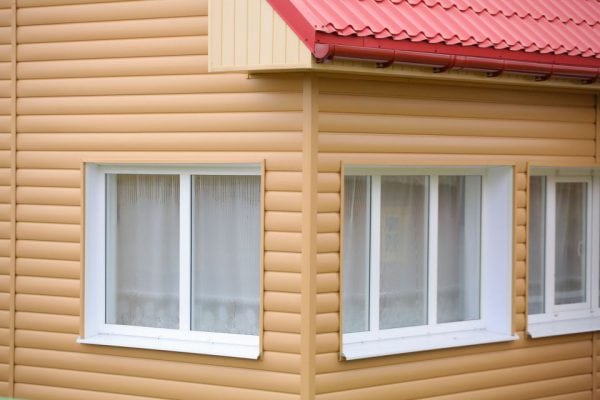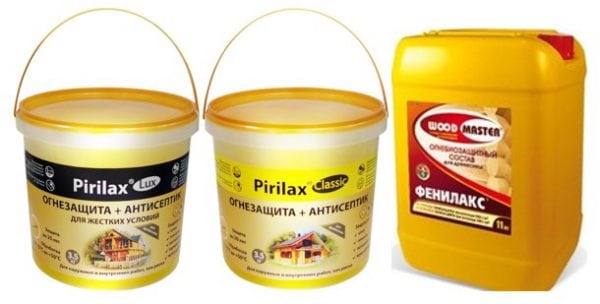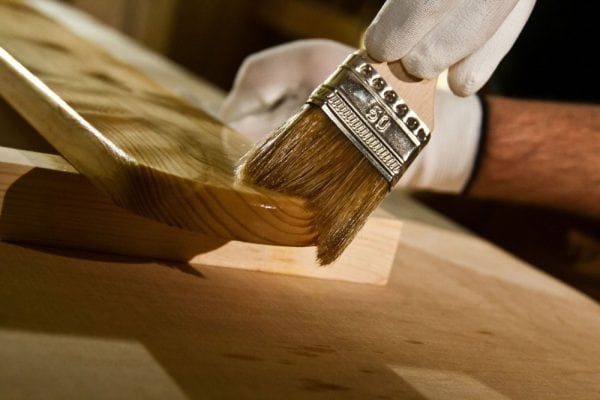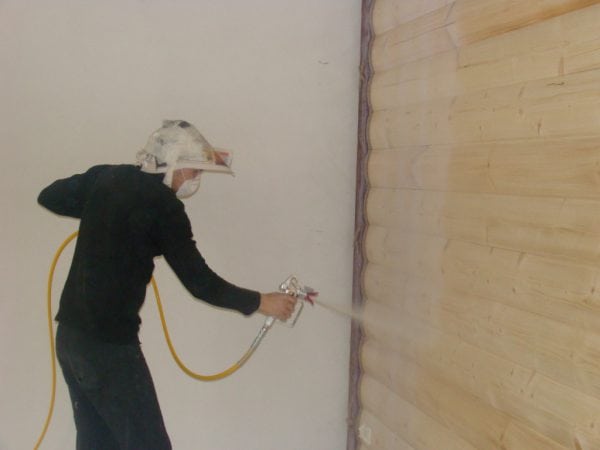The modern decoration material of the block house can be used both for exterior decoration of the house, and for decorating the rooms inside, creating the illusion of a log house. Typically, manufacturers cover the block house with various protective agents - it becomes resistant to adverse environmental influences and does not require processing for decades. But sometimes in the construction market there is material not treated with protective compounds. If you are "lucky" to purchase just such, then you need to choose high-quality impregnation for the block house.
- Impregnation Requirements
- Varieties of impregnating compounds
- How to apply impregnating preparations
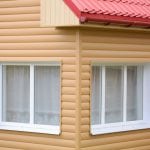
Impregnation Requirements
To protect the finishing material from darkening, drying out, fungus or mold and preserve the beautiful structure of wood, it must be covered with a protective layer. Impregnating compounds are divided according to their properties:
- Fire retardant - reducing the likelihood of fire. These compositions, applied to wood panels, with a significant increase in temperature form a film on the surface that prevents burning.
- Antiseptic - preventing the occurrence of fungi, rot or mold on wood. Some also scare away mice and rats.
- Hydro-protective - preventing moisture and moisture from penetrating into the wood structure of the block house.
- Combined - combining several protective qualities.
For a residential building, it is advisable to purchase combined mixtures that reliably protect the finishing panels from fungus, rodents and fire.
to contents ↑Varieties of impregnating compounds
When thinking about how to process a block house outside or inside your house, it should be borne in mind that the panels, due to their wood structure, are very beautiful. They don’t need the final painting (it is recommended to paint only the old blockhouse that has lost its presentable appearance), therefore, the impregnating compositions will simultaneously be the final protective coating. Depending on the purpose, the following protective and decorative solutions for impregnation can be used:
- Alkyd provide complete protection against mechanical damage, scare away mice and other rodents, but have a pungent odor. If the treatment is carried out inside the house, then you should take care of the good ventilation of the room. They are very suitable for the facade of a house finished with block house, providing it with long-term durability and reliable protection.
- Acrylic water-dispersion is environmentally friendly, but short-lived, suitable only for impregnation of walls inside the house.
- Oil with or without tinting will significantly improve the decorative properties of wood, protecting it from destruction for a long time.
- Glazes are the most expensive, beautiful and durable treatment option. Glaze impregnation provides reliable protection against moisture, UV rays, rodents and insects, while maintaining air permeability, providing the necessary air exchange on a wooden surface.And glaze compositions emphasize the unique woody structure, giving it a matte or glossy shine.
How to apply impregnating preparations
Many craftsmen still argue about how it is more convenient to apply impregnation to a block house: before or after installation on the walls of a house. Each method has its advantages and disadvantages:
- Processing the panel before installation, you can evenly paint all surfaces, but during installation often chips or other mechanical damage occur that will allow moisture to pass through and thereby reduce the quality of the impregnation.
- If the impregnating mixture is applied to the facade or inside the house after installing the panels, this method guarantees uniform coloring. But leaks may occur.
Before starting work, it is necessary to prepare the tools:
- brushes for painting cracks, joints and other hard-to-reach areas;
- rollers for uniform distribution of the selected impregnation over a large area;
- if desired, a spray gun can be used for some solutions.
Surface preparation before impregnation plays an important role. The final result of the work depends on the quality.
It is necessary:
- Thoroughly clean from dust and dirt, if possible - rinse with clean water.
- If varnishes or paints have already been applied to the panel, their remains must be removed using a metal brush or a drill with special nozzles.
- Treat the cleaned and dried surface with white spirit or other alcohol-containing compounds.
After such preparation, it is possible to apply the impregnating mixture on the panel inside or on the facade of the house, evenly distributing the composition on the surface. If necessary, the procedure is repeated after the first layer has dried.
A block-house dwelling house may look like a rustic hut or a cowboy ranch. It all depends on taste and desire. If you provide long-term protection of cladding panels, then in such housing for many years you can relax after a hard day or spend comfortably a weekend with friends and relatives.

